As one of the aspects of human civilization, the color culture in traditional Chinese Hanfu costumes has a long and splendid history. The color of clothing is often a symbol of the times and has strong political significance, and is closely related to the "five colors" that prevailed at that time. Today, we will lead you to have a deeper understanding of the "blue Hanfu".
The Meaning and Place of Blue in Ancient Color Culture
The so-called " Five Pure Colors" originates from the five elements, which are metal, wood, water, fire, and earth, and represent the five pure colors of blue, red, yellow, white, and black in the five directions of east, south, middle, west, and north. According to I Ching, black is the color of the sky and yellow is the color of the earth, which is why it is said that "the sky is dark blue and the earth is yellow".In addition, The Book of Rites recorded that in ancient times, the pure color was considered noble, and the color that combined two primary colors were considered inferior, and the pureness of clothing was highly valued.
Blue in the five elements corresponds to the Eastern wood, meaning birth, which symbolizes the color of the time of birth and growth of all things. During the Eastern Han Dynasty, the dress color requirement of the Grandma-empress and Empress Dowager's silkworm dress was blue above and white below.
In the Ming and Qing dynasties, black was excluded, and the four colors of blue, yellow, red, and white were advocated. Ming and Qing emperors sacrifice, mainly to the capital's four places of worship, the altar of heaven, the altar of earth, the altar of the sun, and the altar of the moon, respectively, worship heaven and earth, sun and moon.
In the firing of ceremonial porcelain, the altar of heaven with blue, the altar of the earth with yellow, the altar of the sun with red, the altar of the moon with white, which also caused the Ming and Qing Dynasties, these four colors of monochrome glazed porcelain greatly developed, bright colors, beautifully made, is a fine piece of porcelain.
About China's Blue-Dyeing Technique
In ancient times, any plant that could produce indigo could be collectively called "blue" or "bluegrass". Indigo (now called blue) was made from bluegrass, but its color was darker than polygonum. This is why the term " blue is better than indigo" is used. Polygonum is one of the bluegrasses dyed blue in the past, sowing seeds in spring and picking leaves in summer and waiting for them to produce new leaves that can be picked again in autumn. After twice picking, a year's clothing is almost dyed enough.
The "blue" of plants scattered in the poem falls on the fabric and becomes the color "blue". Each touch of blue, quiet, natural, dark, or light, strong or pale, is a magical chemical reaction between plants and fabrics, as well as an unexpected surprise between plants and people.
After the polygonum is harvested, it is placed in a pond and soaked in water until the water slowly turns blue-green, and then the rotten leaves and branches are pulled out. Then lime is added to the pond and stirred, which is called "indigo beating," in which the lime is beaten over and over again to make the foam and sink the pigment. The foam produced by indigo beating can be used to make Chinese painting pigment "Huaqing" and traditional Chinese medicine "Qingdai".
The indigo mud that sinks to the bottom of the pond is then filtered out, dried in lumps, and finally powdered. After dissolving in water, it can be dyed by the hand of a dyer to create an ever-changing blue color on the fabric.
The fabric sinks into the dyeing pool, and the thick blue gushes in with the water, infiltrating every tiny grain along the warp and weft of the fabric. It is as if the bluegrass fills a pale and empty shell with its own soul.
The art of blue dyeing, which began in China, has been passed down in Japan as well. Polygonum has been widely cultivated in Japan since it was first brought to Japan from China, and the art of blue dyeing has been developed in such a way that 22 different types of blue dyeing have been developed, from light to deep, and this is the ultimate in blue dyeing.
The Use of Blue in the Modern Hanfu Color Scheme
Nowadays, more and more people are recognizing the beauty of blue, and more and more costume dramas are beginning to warm up to the opposite, yet somehow harmonious "sense of love" between red Hanfu and blue Hanfu.
Take a look at the Tang Dynasty poet Bai Juyi's aesthetics of color, "The sun rises from the river, shining the flowers by the river redder than fire, and the turquoise river water is greener than bluegrass". River flowers, red sun, river water, bluegrass, want to make the picture have a mood, and the color has layers, not only the different colors to reflect each other, but also the same color to enhance each other.
In the eyes of the ancients, blue is a symbol of water and life. Compared with red, blue is pure, serene, elegant, and broad. Blue Hanfu highlights the wearer's cool, unconventional, elegant, simple, and clean, often with gray, white, pink, and blue in the wearing of the same color matching.
When blue and pink is matched, the naive, lively and lovely side of the girl is revealed; when blue is matched with the same color, it can collide with different effects, or graceful and noble or plain and elegant; when matched with gray and white, it shows the simple, concise and elegant temperament of the literati. The bright blue highlights the youth's handsome, vigorous, vibrant; deep blue is to highlight the restraint and noble temperament.
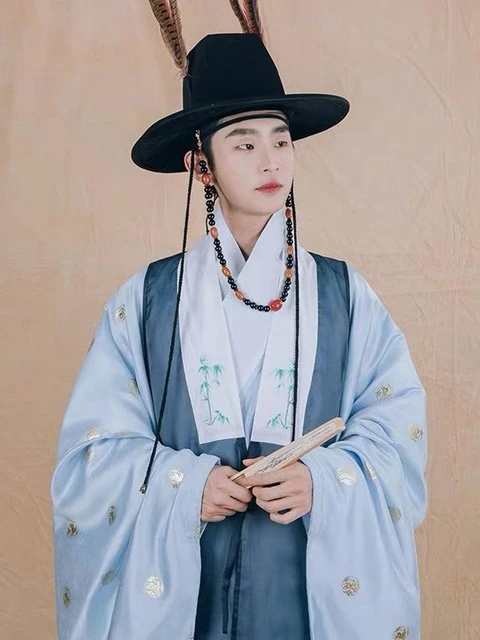
When Blue Hanfu is Combined with Photography
The blue series of old-fashioned photos is one of the preferred shades for little fairies, it is very white on any skin tone and can be perfectly handled no matter what style you want to be gentle, fairy or chivalrous.
If it's your first time taking a Hanfu photoshoot, you're right to choose the blue series.
Five Different Styles of Wearing Blue Hanfu
[Keyword: Gorgeous Blue Hanfu] This stand-up collar Changshan and Mamian dress is covered with three playful cat prints, which are simple and elegant, while the details are vibrant and lively. The faux floral pattern at the hem of the dress is paired with an irregular dark print to create a gorgeous combination of real and imaginary.
[Keyword: Individuality Blue Hanfu] Unlike the previous Chinese costume, this blue Hanfu uses a double-layered Beizi, where the embroidery on the two necklines is both gorgeous and dreamy; the printed underskirt is dark and gradient, which is also very individual and beautiful; the lace inner Beizi is a highlight and can be worn in multiple ways.
[Keyword: Exotic Blue Hanfu] For Hanfu girls who love exotic styles, this light blue Hanfu dress is a great choice. The shoulders and gradient-colored double sleeves are embroidered with flowers and butterflies, setting off a stripped-down look. The bodice and skirt are decorated with blooming hibiscus flowers and fluttering butterflies, creating a gorgeous spring scene.
[Keyword: Elegant Blue Hanfu] There are sleeve flowers on the front piece and cuffs of this blue Hanfu, the skirt lacing is in two colors, one dark and one light, which is more unified with the Jiaoyu skirt. The embroidery on the skirt is lined up according to the rules, which is the same as the embroidery on the top. The whole set looks fresh and elegant.
[Keyword: Lively Blue Hanfu] For those of you who want to wear it as a daily Hanfu, this one is very recommended! The main tone of the blue Hanfu, with a gentle color scheme, suitable for daily wear, and can highlight the girl's dynamic sense of movement.
Blue Hanfu, beautiful and not vulgar, elegant and not charming, cool without losing temperature. But don't forget, although the blue is beautiful, use it in moderation, not too hard, not too violent.
If you want to know more Chinese costumes, please join our community!
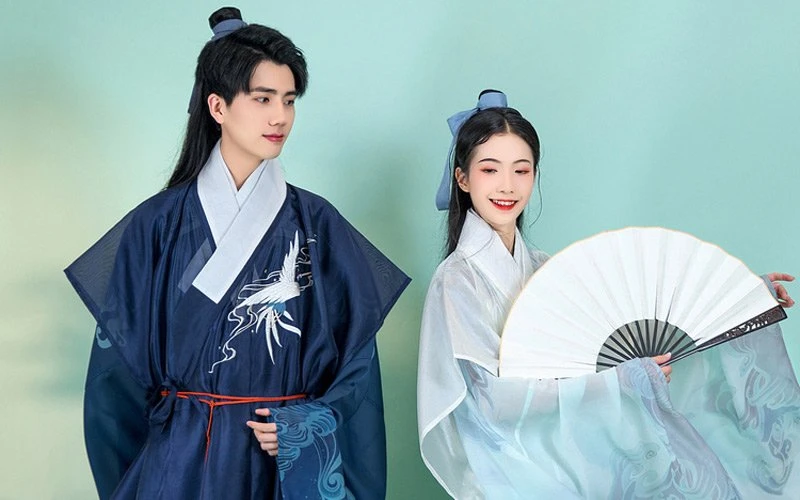

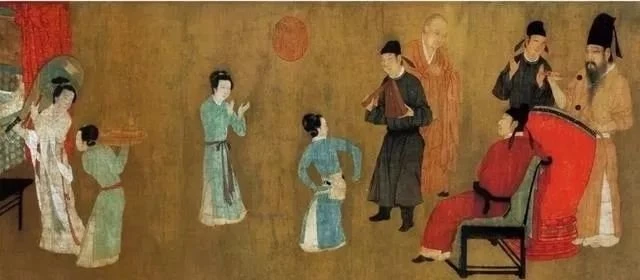
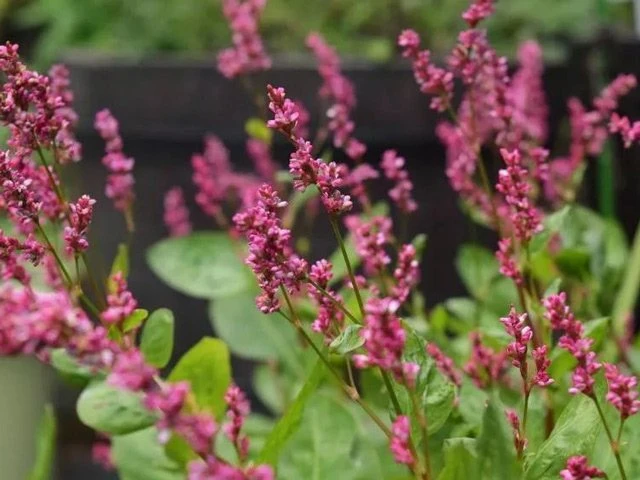
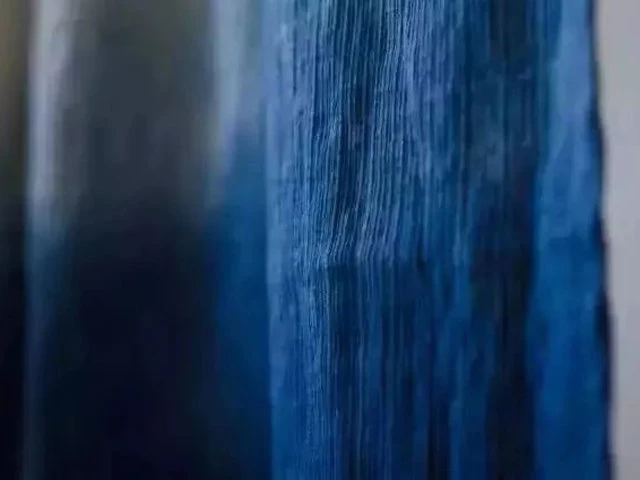
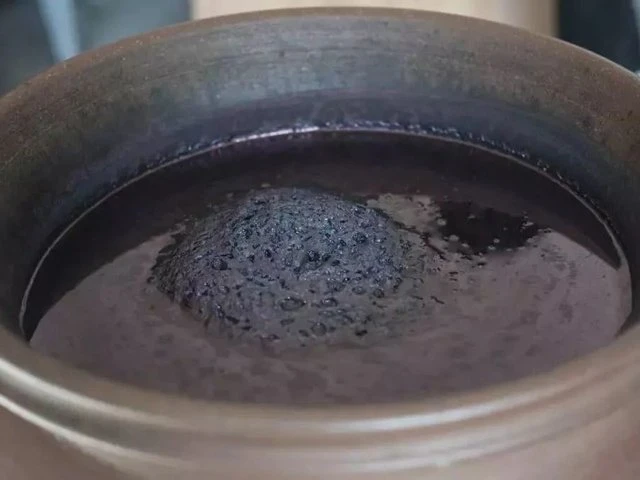
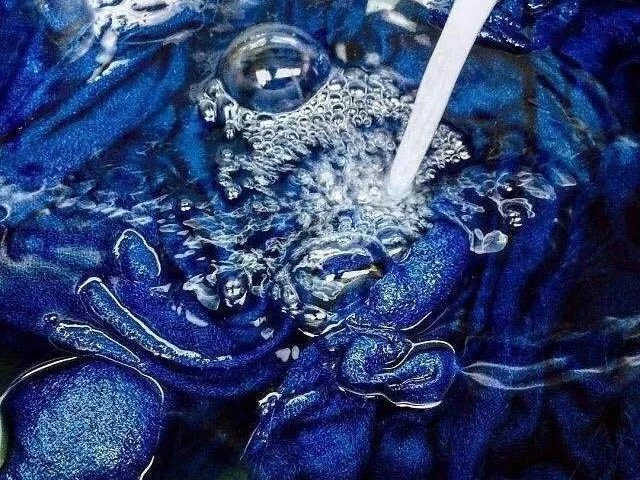
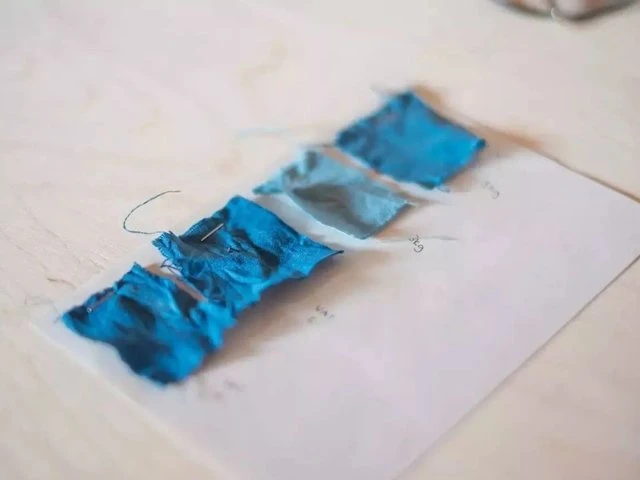
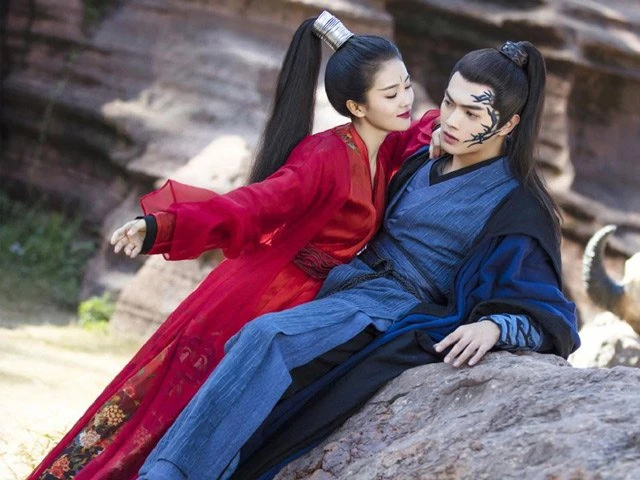
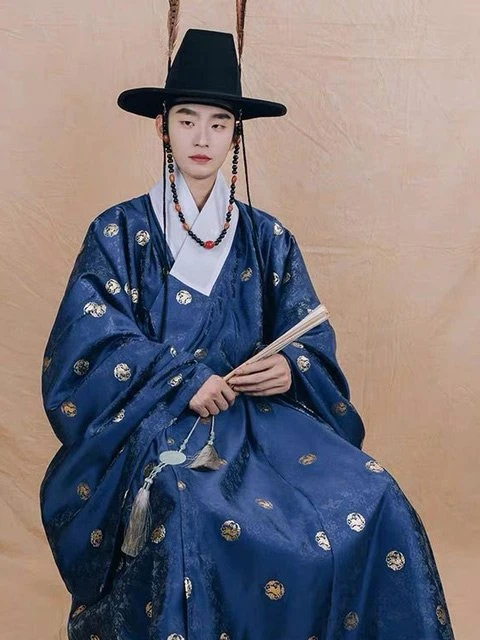
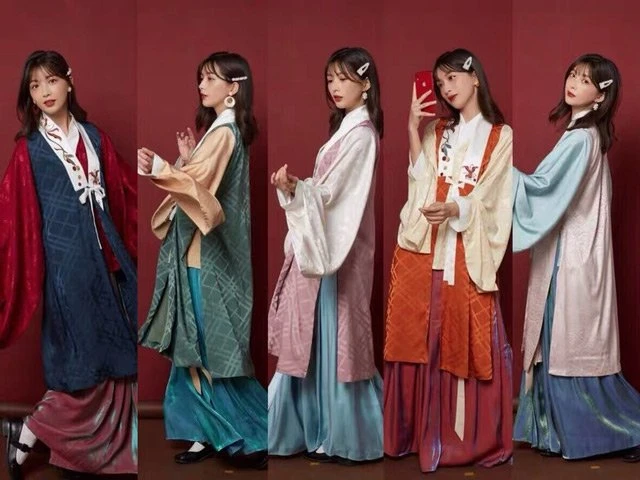
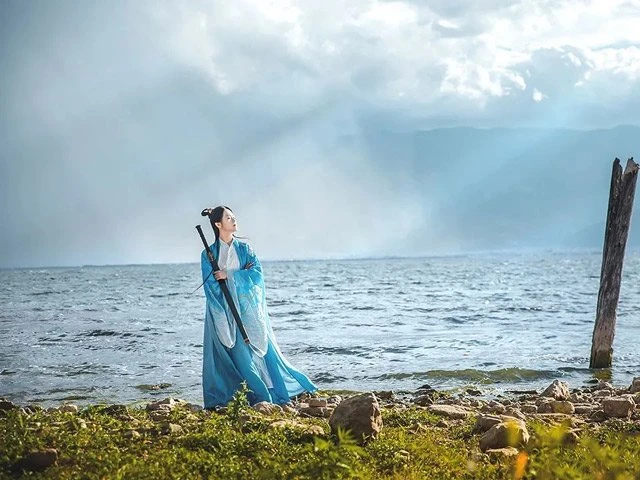
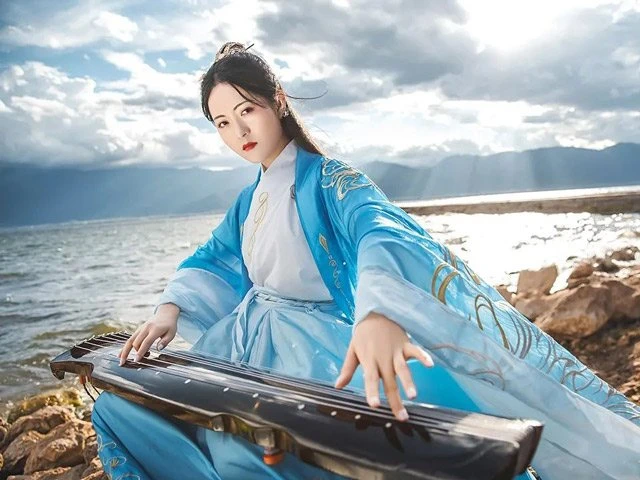
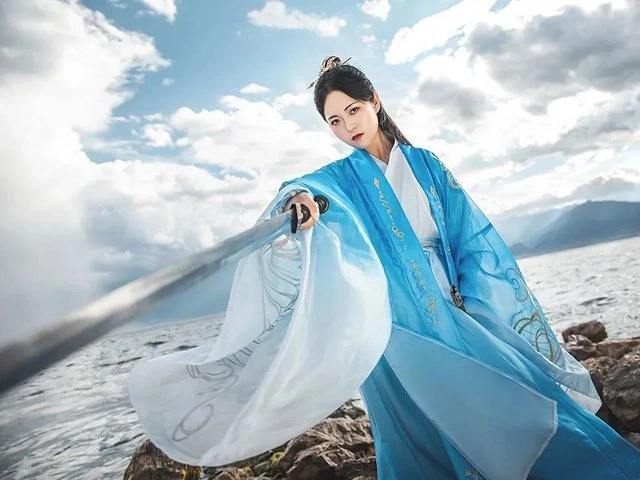
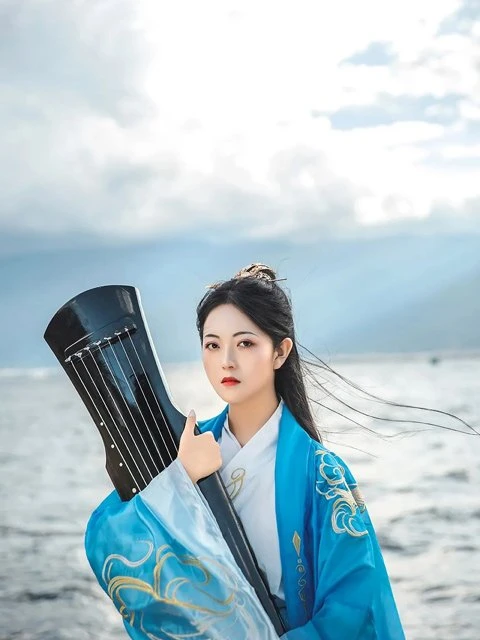
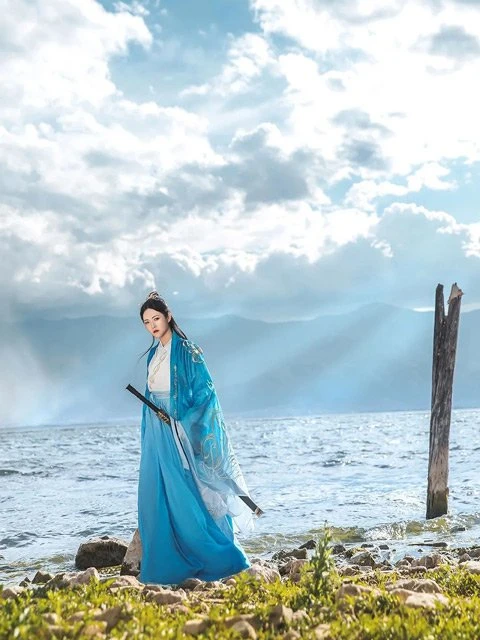
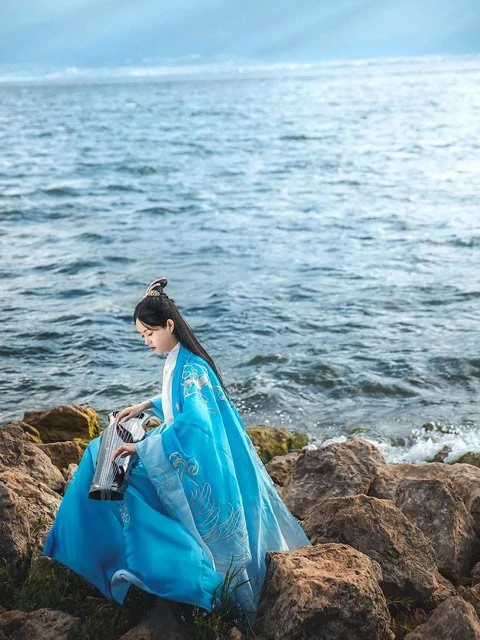
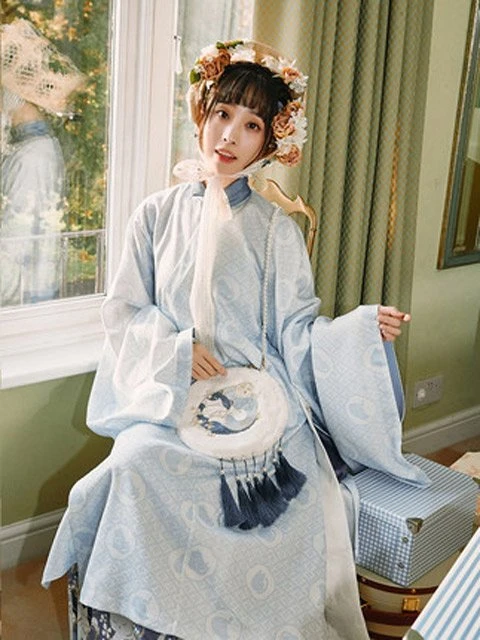
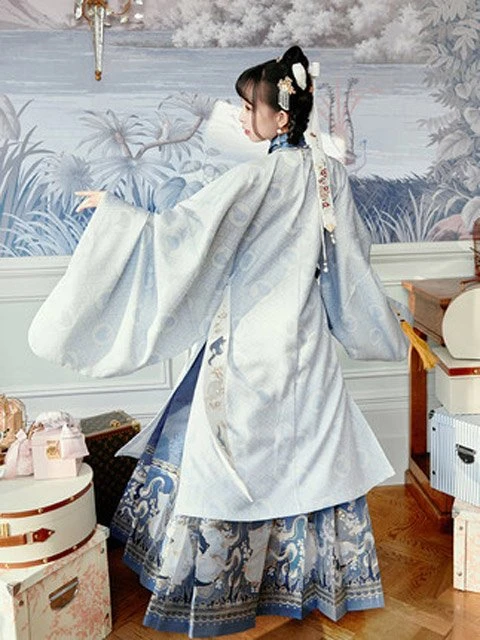
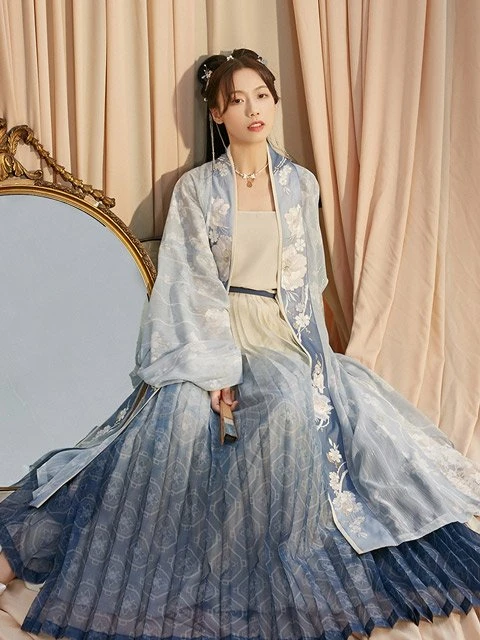
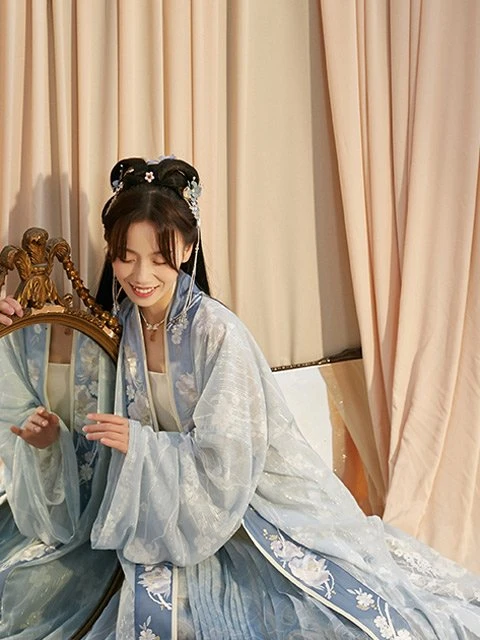
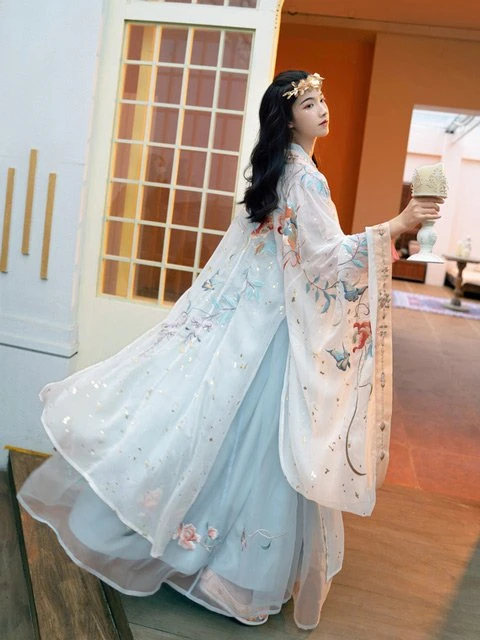
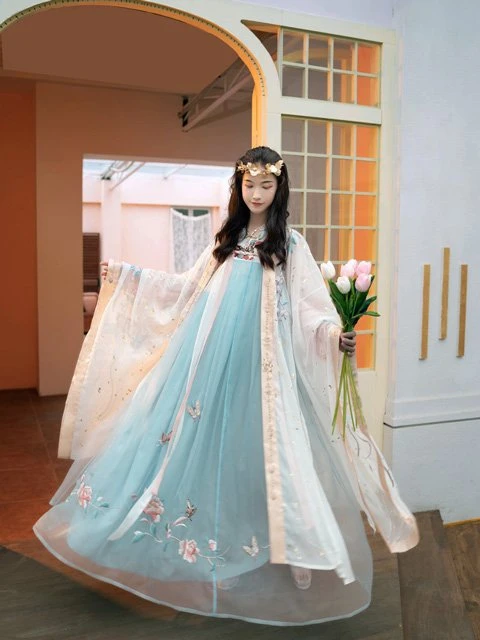
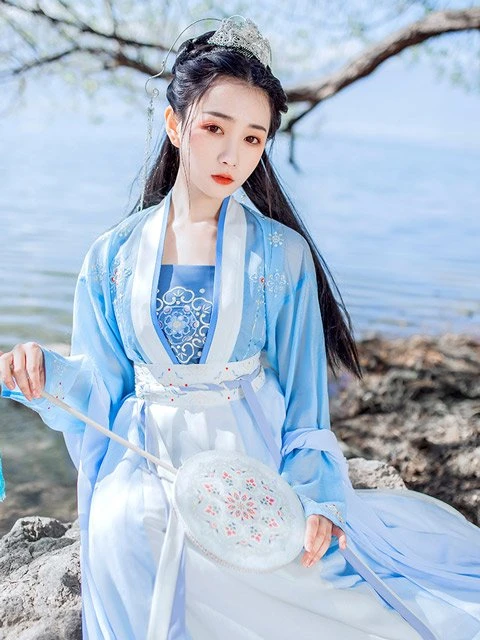
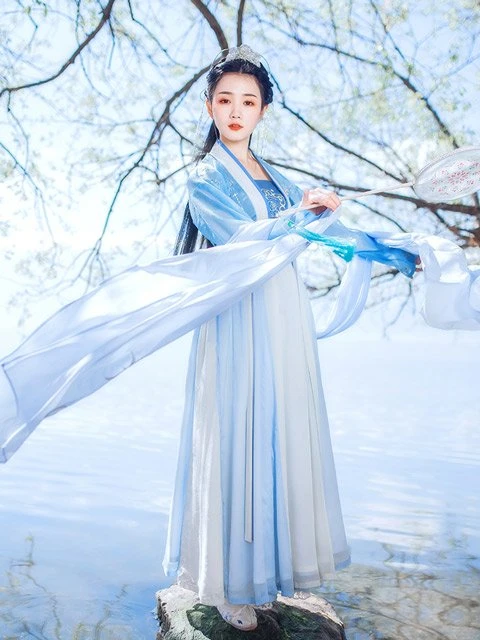
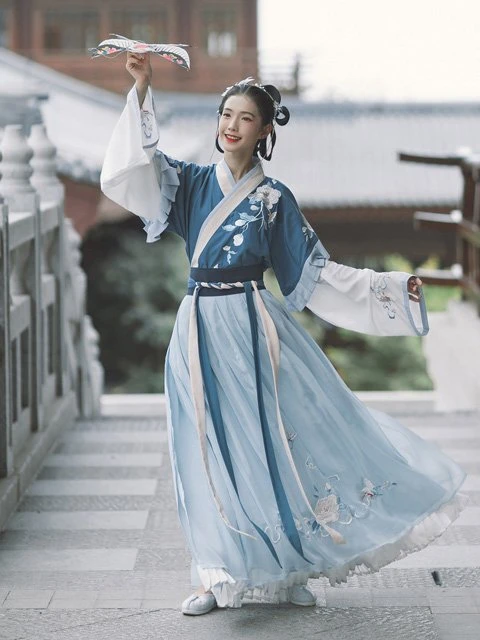
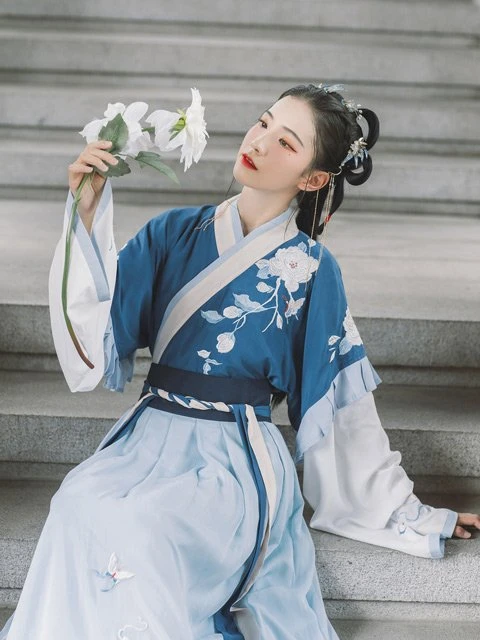



Baju yang indah
I really love these 2
❤️
😍😍😍
this collection of hanfu is so pretty!